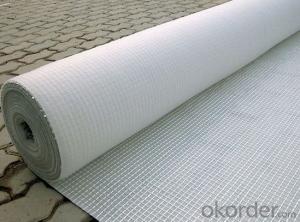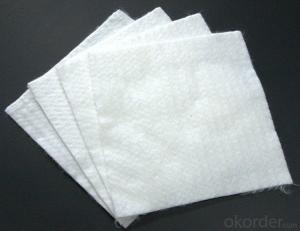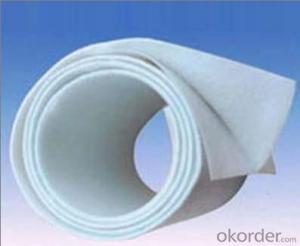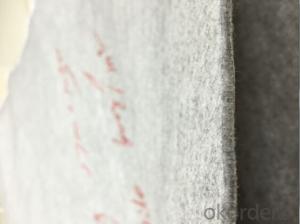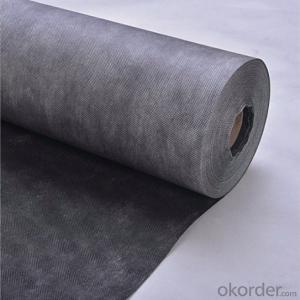Short Fiber Non Woven Geotextile for Construction
- Loading Port:
- Qingdao
- Payment Terms:
- TT OR LC
- Min Order Qty:
- 1000 m²
- Supply Capability:
- 600000 m²/month
OKorder Service Pledge
OKorder Financial Service
You Might Also Like
Introduction of Geotextile
Good flexibility, permeability, filtration, sepatation and easy for construction.
Application of Geotextile
CMAX Geotextile has excellent permeability, acquired, durablity, which can be widely used in railway, highway, movement hall, dams, hydraulic structures, hence hole, coastal shoal,reclamation, environmental protection and other projects.
The main products are Synthetic staple fibers needlepunched non woven geotextiles and slit and split film yarn woven geotextiles.
Specifications:100GSM-1500GSM
length:50m-100m
width:1m-8m
material:100%PET
Packaging Details: pp woven bags or at your request
Delivery Detail: 15 days
Technical Specification


FAQ
Q: What kind of payments does jenor support?
A: T/T, L/C, Cash are accepted.
Q: Do you charge for the samples?
A: Accordeing to our company policy, the samples are freee, we only charge the freight fee. And we will return the freight fee during the next order.
Q: Can you produce according to customers' design?
A: Sure, we are professional manufacturer, OEM and ODM are both welcome.
Q: Do you have other products?
A: Yes, please check the pictures:
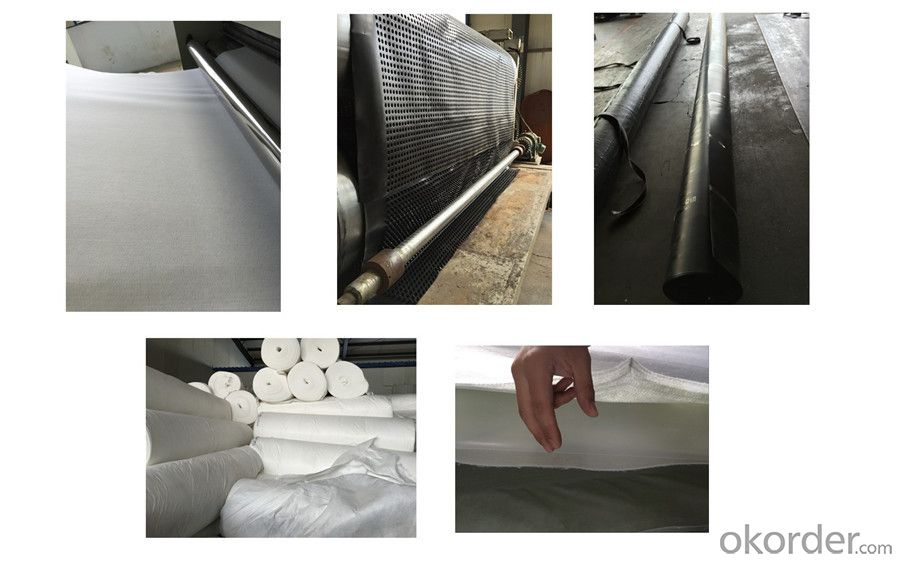
- Q:How do geotextiles help in groundwater protection?
- Geotextiles help in groundwater protection by acting as a barrier that prevents the infiltration of pollutants into the groundwater system. They are used in various applications such as drainage systems, landfills, and erosion control, where they provide filtration and separation of soil particles, ensuring that only clean water enters the groundwater.
- Q:How do geotextiles help in preventing soil compaction?
- Geotextiles help in preventing soil compaction by providing a barrier between the soil and external forces, such as heavy machinery or foot traffic. This barrier distributes the load evenly, reducing the pressure on the soil and minimizing compaction. Additionally, geotextiles enhance soil drainage, allowing water to infiltrate and prevent waterlogging, which can also contribute to soil compaction.
- Q:What is the use of the black network when the shop is paved?
- Roadbed can not hold, tamper with, it is similar to the old man with a mud house, mud with a wheat bran
- Q:Performance index of composite geotextile
- Item Unit Area Quality g / m000 Remark Film Thickness mm0.25-0.350.3-0.5 Fracture strength KN / m57.510.012.014.016.018.0 Longitudinal transverse elongation% 30-100CBR Breaking strength KN≥1.11.51.92. 22.52.83.0 Tearing strength KN≥0.150.250.320.40.480.560.62 Vertical and horizontal peel strength N / cm6 Vertical and horizontal permeability coefficient cm / sk * 10-11-10-13k = 1.0-9.9
- Q:Geotextile testing standards
- Staple stitch filament piercing filament woven weaving
- Q:How are geotextiles affected by temperature variations?
- Geotextiles are generally resistant to temperature variations and can withstand a wide range of temperatures without significant impact on their performance. However, extreme temperature fluctuations, especially rapid changes, can potentially cause expansion or contraction of the geotextile material. This may lead to changes in its physical properties, such as reduced tensile strength or altered permeability. Overall, while temperature variations can have some effect on geotextiles, it is typically minimal and does not compromise their functionality significantly.
- Q:How do geotextiles help in preventing clogging of drainage systems?
- Geotextiles help prevent clogging of drainage systems by acting as a filter, allowing water to pass through while preventing the entry of fine particles and debris that could potentially clog the system.
- Q:Can geotextiles be used in the construction of agricultural ponds?
- Yes, geotextiles can be used in the construction of agricultural ponds. Geotextiles are permeable fabrics that can effectively filter water, control erosion, and stabilize soil. They can be used as a liner or barrier in the construction of agricultural ponds to prevent soil erosion, improve water quality, and provide stability to the pond structure.
- Q:What are the key differences between woven and nonwoven geotextiles?
- Woven geotextiles are made by weaving individual threads together to create a strong and durable fabric, while nonwoven geotextiles are made by bonding fibers together using heat, chemicals, or mechanical processes. Woven geotextiles have high tensile strength and are commonly used for soil stabilization, erosion control, and separation of different soil layers. On the other hand, nonwoven geotextiles have excellent filtration and drainage properties, making them suitable for applications such as filtration, separation, and protection. Overall, the key differences between woven and nonwoven geotextiles lie in their manufacturing process, physical properties, and intended usage.
- Q:How do geotextiles help with erosion control?
- Geotextiles help with erosion control by providing a protective barrier against soil erosion. They are placed on the soil surface or buried within it to prevent the loss of soil particles due to water runoff or wind. The geotextiles allow water to pass through while retaining the soil, preventing erosion and maintaining soil stability.
1. Manufacturer Overview |
|
|---|---|
| Location | |
| Year Established | |
| Annual Output Value | |
| Main Markets | |
| Company Certifications | |
2. Manufacturer Certificates |
|
|---|---|
| a) Certification Name | |
| Range | |
| Reference | |
| Validity Period | |
3. Manufacturer Capability |
|
|---|---|
| a)Trade Capacity | |
| Nearest Port | |
| Export Percentage | |
| No.of Employees in Trade Department | |
| Language Spoken: | |
| b)Factory Information | |
| Factory Size: | |
| No. of Production Lines | |
| Contract Manufacturing | |
| Product Price Range | |
Send your message to us
Short Fiber Non Woven Geotextile for Construction
- Loading Port:
- Qingdao
- Payment Terms:
- TT OR LC
- Min Order Qty:
- 1000 m²
- Supply Capability:
- 600000 m²/month
OKorder Service Pledge
OKorder Financial Service
Similar products
New products
Hot products
Hot Searches
Related keywords
